How to beat sore muscles
Where it comes from and how to get rid of it
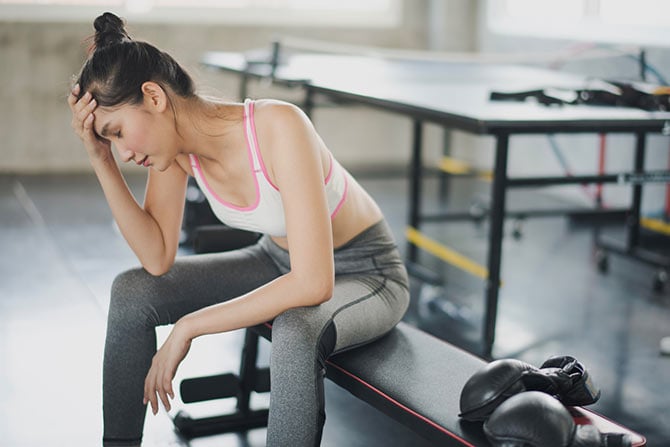
Start training effectively and stop torturing yourself with sore muscles! In this article, we'll uncover widespread myths about sore muscles and also give you tips on how to keep them in check. Or maybe you already have sore muscles? We'll tell you what really helps.
- How, where, when - everything you need to know about sore muscles
- 5 myths about muscle soreness
- Strategies against muscle soreness - what really helps
How, where, when - everything you need to know about sore muscles
What makes muscles feel sore? In this article, we'll give you a brief overview of the most important facts about sore muscles.
When does muscle soreness develop?
Of course, everyone reacts differently to physical load. Muscle soreness usually occurs when we perform unfamiliar movement patterns or overload the muscles. Muscle soreness usually happens when hitting the gym after a long hiatus.
How do muscles get "sore"?
The heavy strain on muscles can cause tiny muscle tears to form in the muscle fibres. Water then gets into these tears, causing oedema. Oedema causes the muscles to swell and the stretching becomes noticeable as muscle soreness. This added sensitivity is the feeling of soreness.
Good to know: The word "sore" comes from the old english word sar, meaning "painful, grievous, aching, sad, wounding," which is influenced in meaning by Old Norse sarr "sore or wounded."
How long does muscle soreness last?
Muscle soreness usually appears 12 to 72 hours after exercising. Sore muscles can cause pain for up to ten days, but usually last for two to six days. In most cases, sore muscles reach their peak after one to two days.
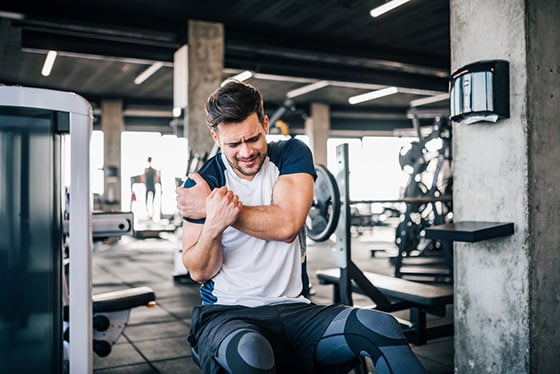
5 myths about sore muscles
"Just train through the muscle soreness. Keep training, through in some stretches, a magnesium pill and you're good to go." Really? Let's debunk the five most persistent myths about sore muscles.
1. Sore muscles are a sign of good training
Strong pain means strong muscle growth? This equation does not work. Because sore muscles are not an indication of growing muscles, as they can also be caused by abrupt exertion. Rather, sore muscles suggest that training needs to be adjusted. If the muscles hurt, this is a sign of overload.
2. Magnesium is the magic bullet
A few magnesium tablets and sore muscles gone! Often touted for helping with cramps and aches, magnesium has a reputation as a muscle soreness killer. However, if you don't have a magnesium deficiency, it's questionable whether the mineral really has a positive effect on sore muscles. Reliable studies on this topic can't be found. And experts also contradict this common assumption.
3. Stretching helps sore muscles
Every athlete knows that stretching before and after practice is a must. If the muscles are nicely stretched, sore muscles don't stand a chance. Or do they? According to a study by the University of Sydney, stretching does not prevent muscle soreness. Even if it doesn't stop sore muscles from acting up, it still has its uses. See our article the best stretching exercises before and after running for the positive effects stretching has on recovery and well-being.
4. Work through the pain
Just work through the pain? That's sure to backfire. Pain is a sign from your body that its muscles are damaged and need time to repair. If you don't allow time to recover from sore muscles, recovery will take all the longer while the pain just increases.
5. Messages can cure muscles soreness
While a light massage appears to have a positive effect on circulation. A strong massage combined with sore muscles will interfere with the healing process. From there, the muscles will continue getting irritated, delaying recovery further.
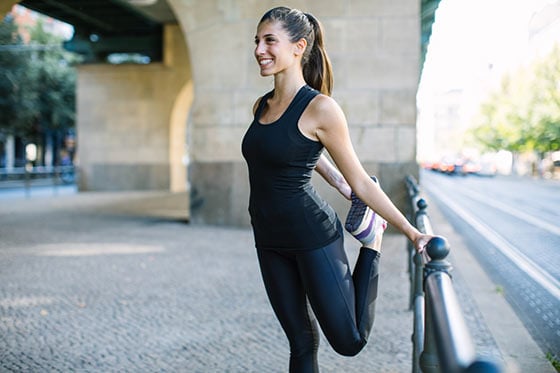
Tips against sore muscles - What really helps
In the fight against sore muscles, go with facts, not myths. We've done the work and collected tips to help you beat sore muscles.
Preventing muscle soarness
Prevention is better than treatment. This is especially true when it comes to sore muscles. Fortunately, there are a few exercises you can incorporate into your daily routine to help prevent sore muscles.
Structured training
The enemy of sore muscles is structured training. This means not overloading yourself when exercising. The following points can help you with this:
Increase training slightly
Always increase your training only slightly. This is especially true if you are a beginner or training new movements. Pay close attention to how your body and muscles react and adjust intensity and load.
Always train muscles in groups of two
Especially if you train exercises that are one-sided in nature, such as soccer or handball. In this way, you prevent muscles from being overloaded.
Fascia training
Fascia is the connective tissue, such a tendons, ligaments and joints that run through our entire body. The connective tissue really is the unsung hero of the body. It gets no credit when everything is working properly, but you know exactly when something isn't right. When faced with too much strain or stress, or too little movement, pain then develops and muscle soreness increases. Regular fibre training can help you become more flexible and reduce pain.
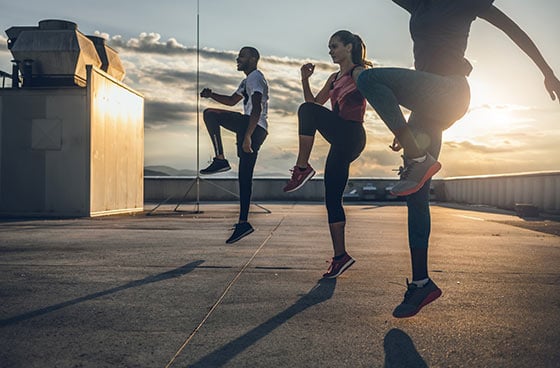
Warm up before training
Going from zero to one hundred isn't a great idea for your muscles. Warming up before a training session promotes circulation and makes your muscles more elastic. For a warm up, a few standing jumps or light jogging suffices.
Matching clothes
Evening during training, your body should stay warm. Especially in the colder months, there is a real risk of cooling down. Therefore, it's quite important to be ready for colder temperatures and to choose appropriate clothing.
Are you a runner or cyclist? Then you'll find the right winter jerseys in our online shop.
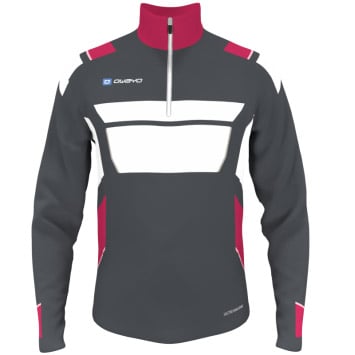
Winter Running Jerseys RLW5 Pro Men
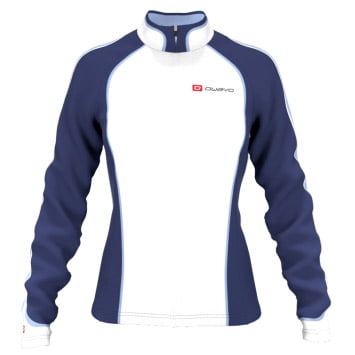
Winter cycling jerseys CW5w Pro ladies
Eating after training
Your body consumes nutrients, energy and fluids. So it's important you eat up after training. A well-rounded recovery diet, consisting of a mix of proteins, antioxidants and carbohydrates, can support your muscle recovery.
For more information on nutrition, check out our article The right nutrition for your training.
It's also important to rehydrate after exercise. Without rehydrating, your body won't get the fluids it needs.
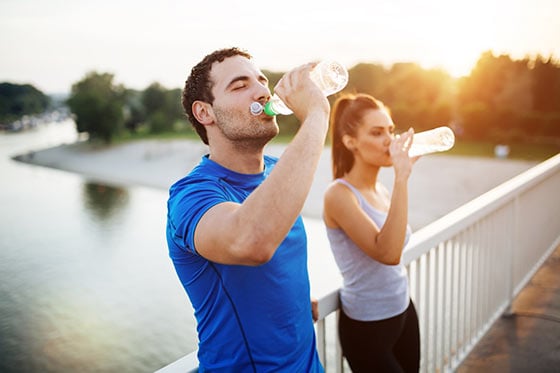
Help with acute muscle pain
Even the best training plan doesn't protect you from occasional sore muscles. Finally, we'll tell you what to do with sore muscles.
Light movement
While you shouldn't exercise when you have sore muscles, this doesn't mean you should lay around in bed until you've recovered. Light exercise can help drain fluid from the muscles. When training, pay attention to the intensity and type of movement. For example, walking, light cycling and swimming are good for regeneration.
Heat
A warm bath after a workout not only feels good, but it also helps with sore muscles. Heat promotes blood circulation in the muscles, which in turn helps them regenerate. Besides baths, heat pads or ointments are also suitable for sore spots.
Rest
There is unfortunately no magic bullet to muscle soreness. Once the sore muscles are there, it's time to get into recovery mode. Make sure you get enough sleep at night and take it easy during the day. Time is the only cure for sore muscles.
An end to sore muscles
Even if it hurts right now, the pain isn't forever. Hopefully, our tips will help you prevent muscle pain in the future. We wish you good luck with your pain-free training.
Our magazine articles also offer even more information and tips on training:
Image Credits: Title Image: Niphon Khiawprommas/gettyimages, Image 2: nortonrsx/gettyimages.de, Image 3: alvarez/gettyimages, Image 4: sanjeri/gettyimages, Image 5: nd3000/gettyimages